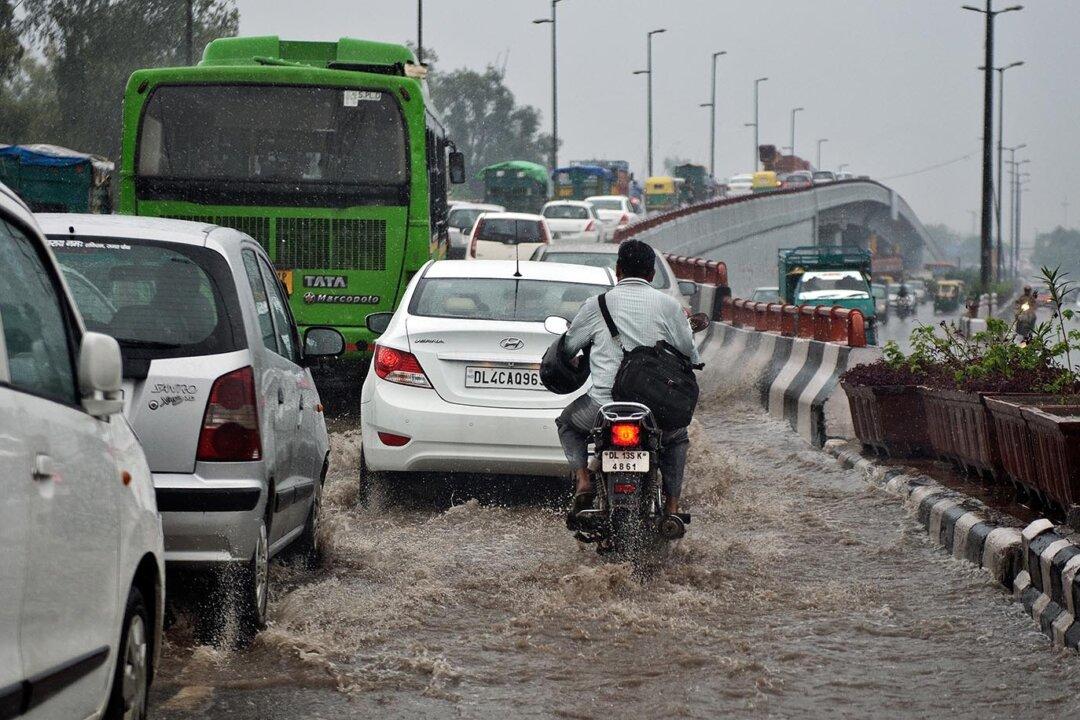The United Nations Intergovernmental Panel on Climate Change (IPCC) predicted in a recent report that the entire Indian subcontinent may witness longer rainy seasons in the second half of this century.
“There is a strong hint that the duration of the rainy season would increase due to early onset of monsoon,” Krishna Kumar Kanikicharla, climate scientist at Pune’s Indian Institute of Tropical Meteorology and one of the drafting authors of the IPCC report, told the Times of India (TOI).
“The quantum of rainfall will also increase during the latter part of this century,” he said.
According to the IPCC report “Climate Change 2013—The Physical Science Basis,” the areas affected by monsoon systems will increase globally over the 21st century, and although monsoon winds are likely to weaken, monsoon precipitation is likely to intensify due to the increase in atmospheric moisture. Early monsoon onsets and delayed withdrawals will result in the lengthening of the monsoon season in many regions.
The technical summary of the report comprehensively projected regional weather changes and their relation to major climate phenomena.
Kanikicharla told TOI that there was “growing evidence” of the impact of the climate change on monsoons in South Asia and the tropical cyclone system in the Bay of Bengal.
For South Asia, the report predicted an enhanced summer monsoon precipitation, and increased rainfall extremes by landfall cyclones on the coasts of the Bay of Bengal and the Arabian Sea.
Since 1850, temperatures in the last three decades have been successively warmer at the Earth’s surface than in any preceding decade.
The panel also found that the northern part of the continent is likely to see higher winter temperatures—making shifts from 0.4 to 0.8 degrees Celsius by mid-century, and 3 to 5 degrees Celsius by the end of the century.
Prashant Goswami, another lead author of the IPCC report and a chief scientist at Bangalore’s Council of Scientific & Industrial Research, told TOI that the conclusions are variable.
According to Goswami, the regional level predictions were solely based on climatic projections that were not as firm as those made at a global level because these uncertainties increase as they go from global to regional or from regional to sub-regional levels.
“But one has to have an element of faith in these conclusions, which are based on well-defined scientific methodology,” Goswami said.




